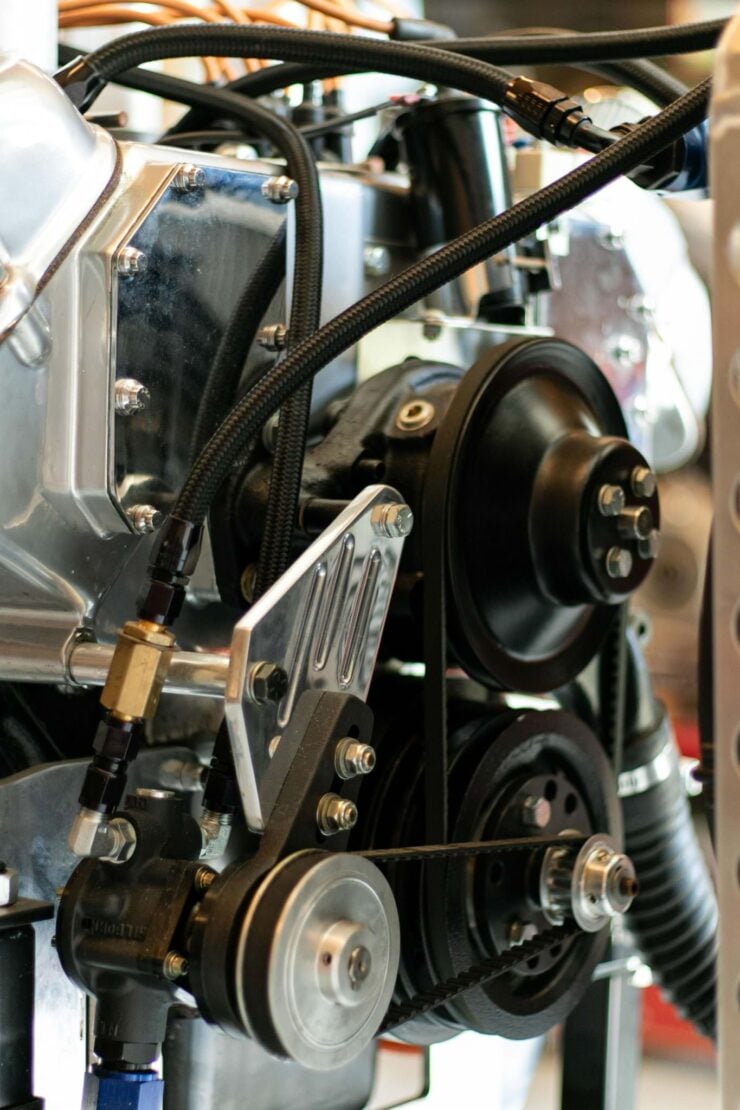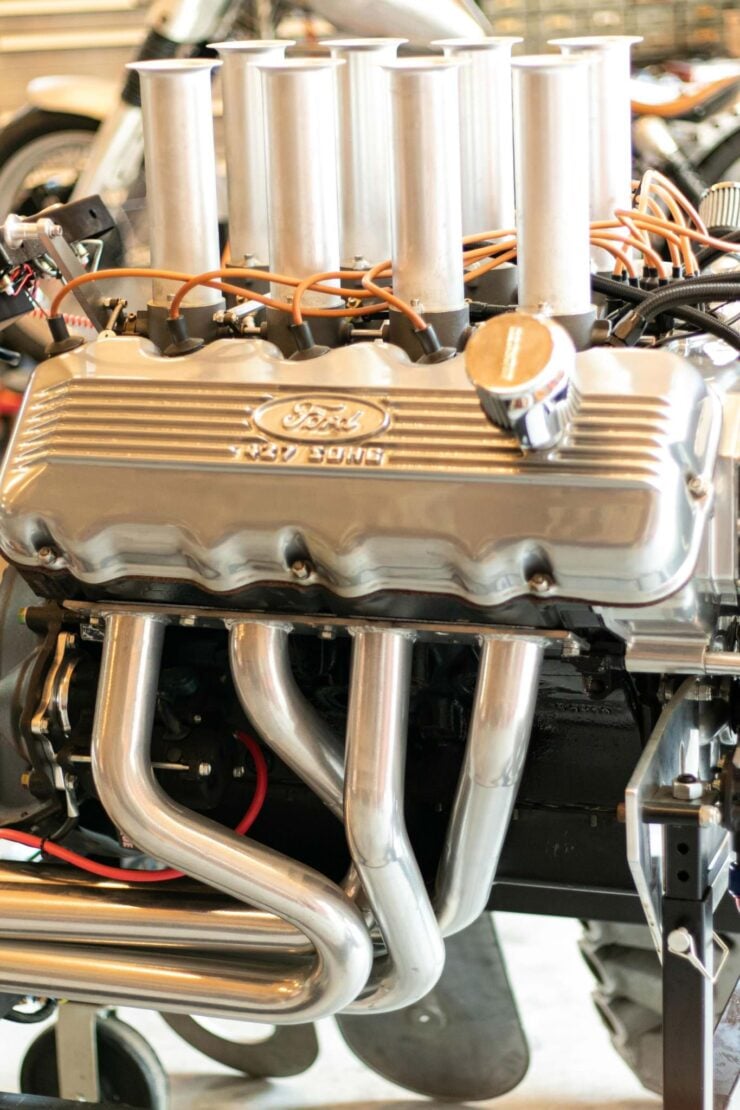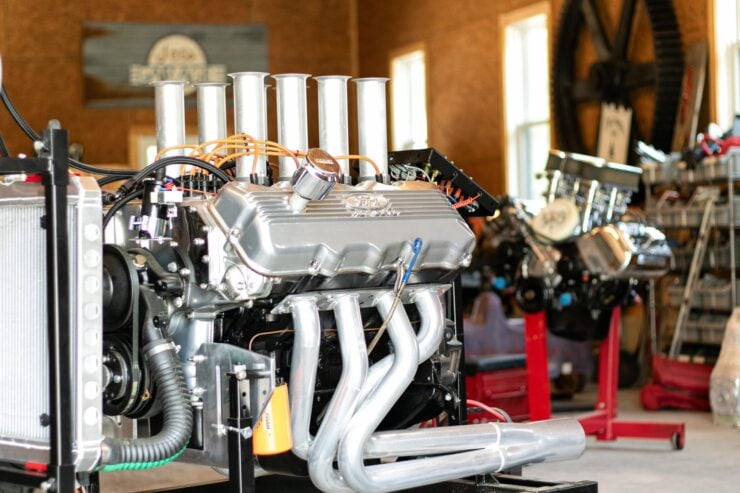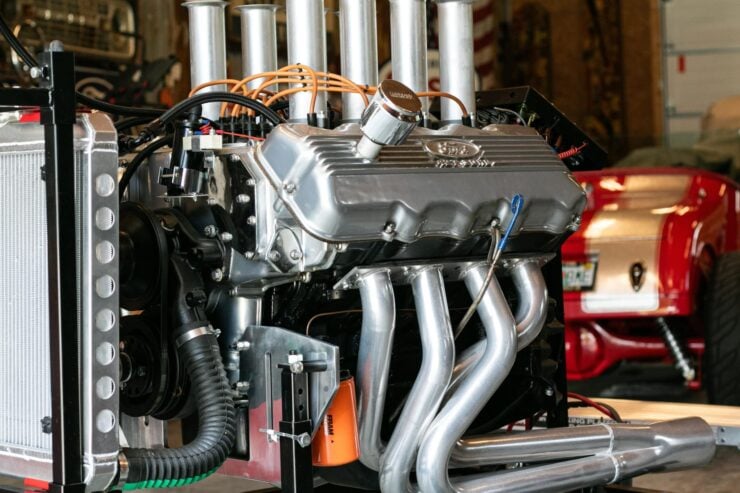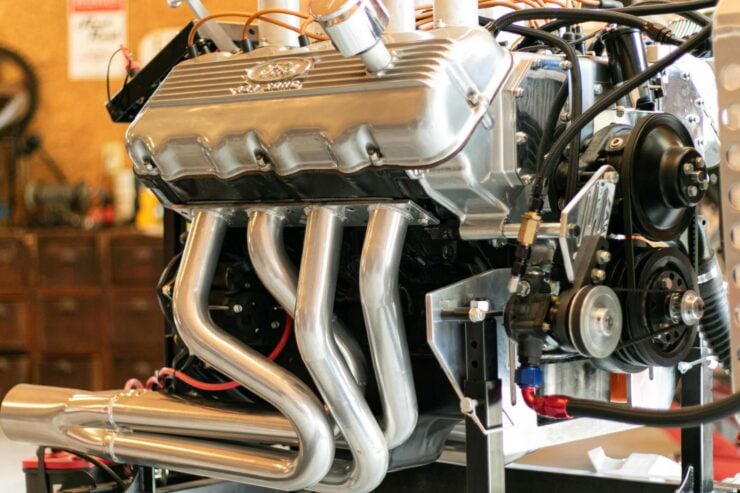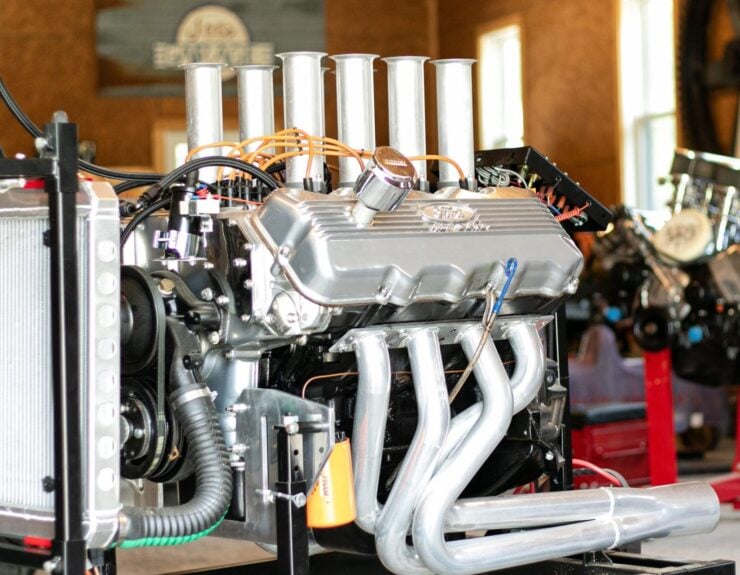This is a rare Ford 427 SOHC Cammer V8, it’s one of the most unusual American V8s of the 1960s, and it offered incredible performance by the standards of the time, with 650+ bhp in race tune.
This Cammer V8 is fitted to a test stand, with long intakes, open exhaust headers, and a control panel for running it safely – though you’ll want some ear muffs.
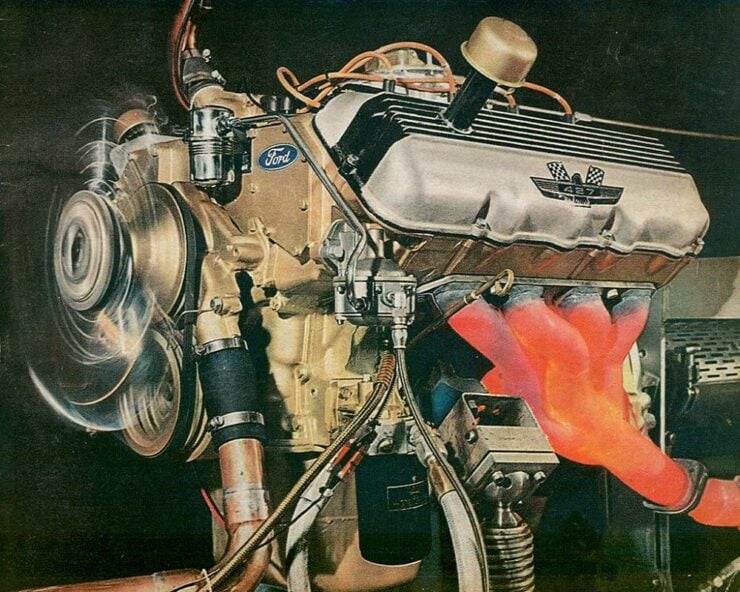

The Ford 427 SOHC “Cammer” V8: NASCAR’s Forbidden Giant
The Ford 427 SOHC V8, commonly known as the “Cammer” for its single overhead cams, was a short-lived but immensely influential engine developed by Ford during the horsepower wars of the 1960s.
Conceived in 1964 as Ford’s answer to Chrysler’s dominant 426 Hemi, the 427 SOHC was a brutally powerful single overhead camshaft (per bank) engine built for high-rpm endurance and sustained high output under race conditions.
Although it was effectively banned from NASCAR racing before it ever turned a lap in competition, its reputation was later cemented in drag racing – and it became one of the most storied engines in Ford’s history.
The Hemi v Cammer Rivalry
By the early 1960s, Ford’s racing efforts were struggling to keep pace with Chrysler’s rapidly advancing big-block engines, especially the race-ready 426 Hemi V8 introduced in 1964. Ford’s top offering at the time, the 427 cubic inch FE pushrod V8, was potent but couldn’t breathe as efficiently at high rpm due to its wedge-style head.
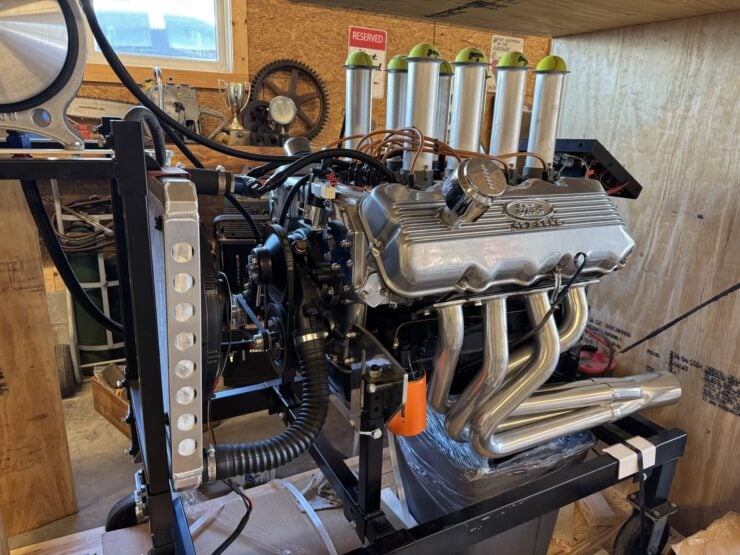


To respond, Ford engineers began developing an overhead camshaft version of the 427 – and they did so with uncharacteristic urgency – developing it in just 90 days.
Design And Technical Development
The “Cammer” project took the base 427 FE side-oiler block, already proven in NASCAR and at Le Mans, and mated it with new aluminum heads that featured hemispherical combustion chambers and a single overhead cam per bank. The result was a hybrid design: the bottom end of an FE, but with a valvetrain more in line with European racing engines.
A long timing chain – over 6 feet in length – linked the crankshaft to the overhead cams, introducing significant complexity but allowing Ford to work within the architecture of the FE block, and within their compressed development timeline.
Each SOHC head featured 2.25 inch intake and 1.90 inch exhaust valves, with valvetrain geometry optimized for high-rpm flow. The engine used a mechanical roller cam and shaft-mounted rockers, and a single four-barrel carburetor was standard, with a dual-quad intake also available.
In race trim, the 427 SOHC made over 650+ bhp at 7,500 rpm. For street use, in the rare case it was installed, it was conservatively rated around 616 bhp. The torque was immense, and the top-end pull outclassed nearly anything on the track.
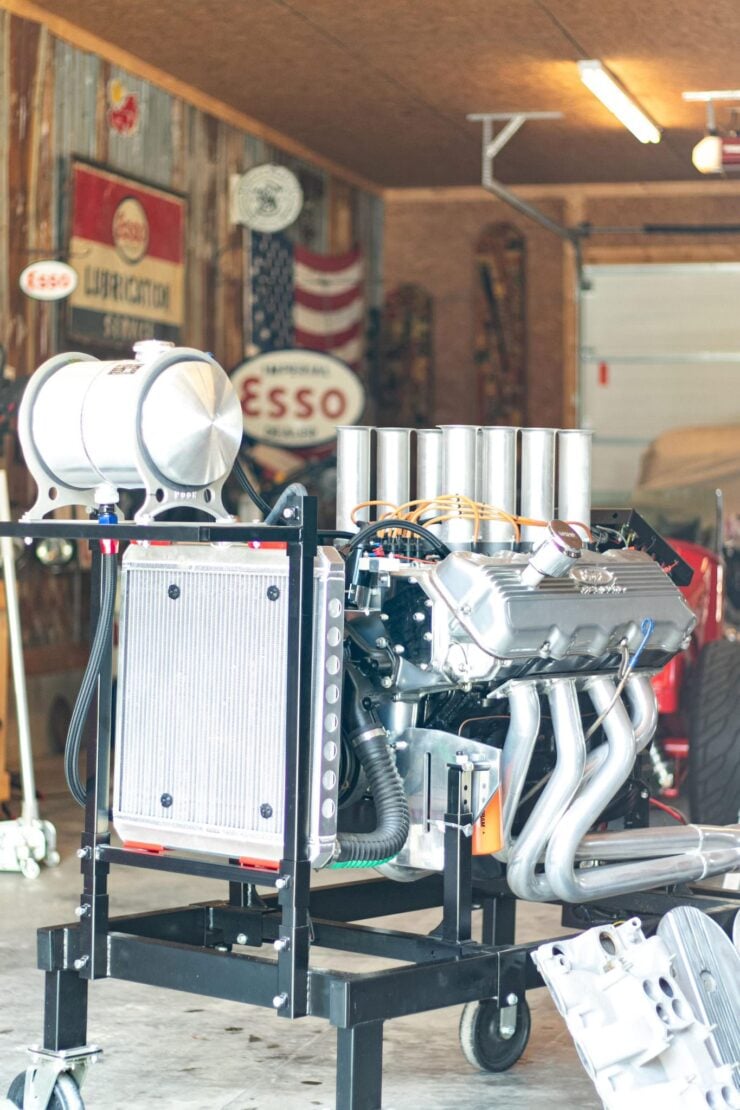


NASCAR Banishment
Ford initially intended to debut the Cammer in NASCAR competition for the 1965 season, specifically to challenge the Chrysler Hemis in the Grand National series. However, NASCAR president Bill France quickly outlawed overhead camshaft engines before the SOHC could race.
This decision was framed as a cost-control measure, but many saw it as a political move to protect Chrysler’s foothold. Ford retaliated by pulling factory support from NASCAR and pivoted instead to drag racing, where the NHRA had no such restrictions. It was here that the Cammer would truly show its potential.
Dominance On The Strip
In NHRA Super Stock and Top Fuel competition, the SOHC engine proved devastating. Ford-backed racers like Gas Ronda and Connie Kalitta ran Cammers in Mustangs and dragsters with great success.
In Top Fuel, dual-Cammer setups with nitromethane routinely cracked 1,000+ bhp. Kalitta, in particular, ran sub-7 second quarter miles in his “Bounty Hunter” rail dragster using twin SOHC engines – a remarkable feat at the time.
The Cammer’s durability at high rpm made it ideal for the drag strip. Its broad powerband and massive airflow gave it a clear advantage in heads-up racing. However, its size, cost, and complexity made it impractical for mass production.
Production Numbers And Legacy
Ford never produced the SOHC 427 in large volumes. Fewer than 600 complete engines were built by the factory, although a wider number of service and over-the-counter parts were sold through Ford’s racing division.
The engine was never offered in a production car from the factory, though many were installed in Mustangs, Galaxies, and even AC Cobras by racers and enthusiasts.
One major technical flaw was the long timing chain, which could stretch under high stress and introduce valve timing inconsistencies at high rpm. Some drag racers noted differences of a few degrees between the two cams due to stretching chains, but they largely worked out their own solutions.
Chain tensioners were fitted, but chain whip was still an issue. Also, because of the Cammer’s high maintenance cost, the relative lack of spare parts, and the complexity of rebuilding it, it was mostly limited to well-funded teams or individuals.
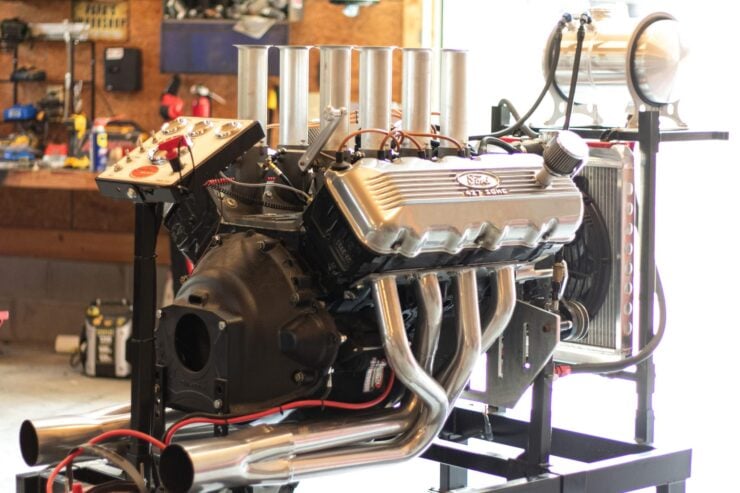


End Of The Line
The SOHC 427 was effectively sidelined by the late 1960s, replaced in drag racing by newer platforms and eventually overshadowed by the advent of more specialized race engines.
Still, its impact has endured – it represented the extreme outer edge of what could be done with production-based architecture in the American muscle car era. For many Ford fans, it remains the pinnacle of 1960s Blue Oval V8 engineering.
Today, original SOHC engines and parts command a premium, and a handful of companies produce reproduction blocks, heads, and components for those intent on building modern versions.
The Cammer Ford 427 SOHC V8 Shown Here
The engine you see here is an original Ford 427 SOHC Cammer V8 that has been given a series of upgrades, the most significant of which is the fitment of an eight-stack fuel injection system.
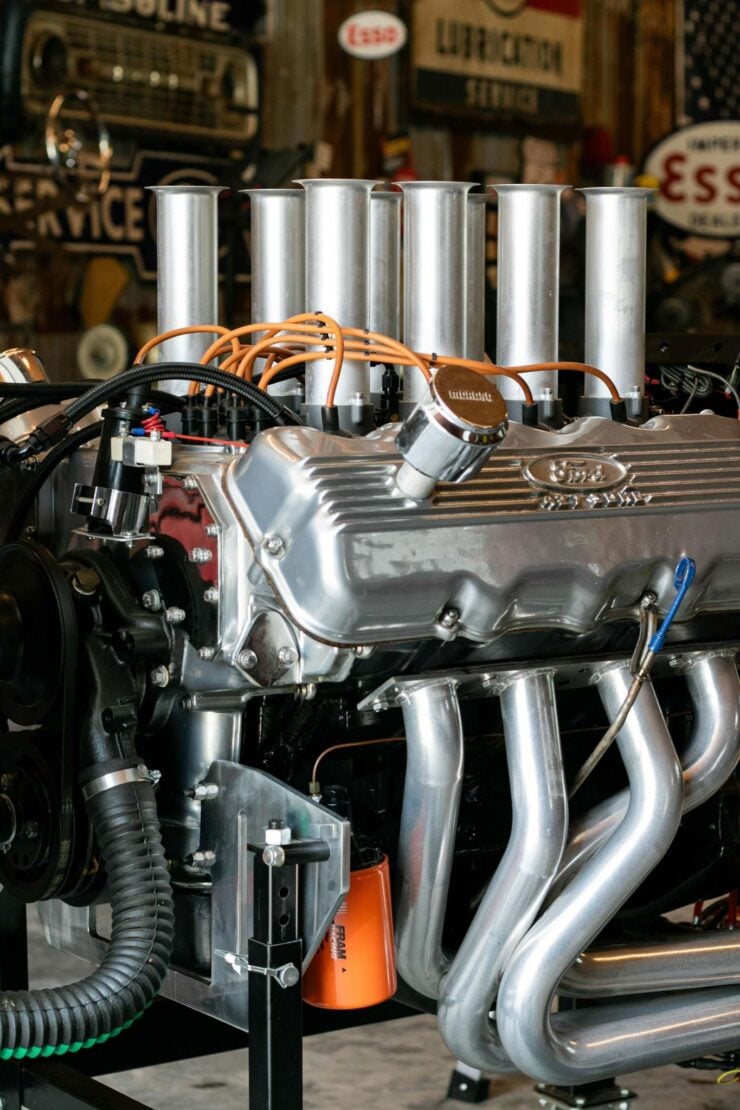


The engine is now fitted to a test stand and it’s said to have previously been part of Richard Munz’s collection. The test stand includes everything needed to run the engine, including a radiator, battery, and fuel tank, as well as an instrument panel for monitoring the engine while it’s running.
It’s now being offered for sale out of West End, North Carolina on Bring a Trailer. If you’d like to read more about it or place a bid you can visit the listing here.
Images courtesy of Bring a Trailer


